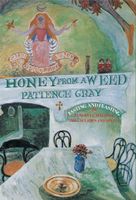Label
All
0
Clear all filters
🍝 Enjoy the cooking of Italy and save 25% on ckbk Membership 🇮🇹
Fico d’India
Prickly Pear, Indian Fig
Appears in
Published 1986
Native of Mexico naturalized in the Mediterranean where its impenetrable thickets are often used as boundary lines. Its broad ‘stems’ when young are chopped for goat fodder. Its orange fruits, ripening in late summer, grow on the edges of the stems and are covered with minute prickles, almost invisible. They taste best when still green, at early morning after rain. Or late in winter.
Pick at dawn, handle with caution. An adept with a knife, having used a figleaf to twist off the fruit, slices a circle from the top, makes four vertical incisions, then opens out the skin by deftly peeling it back. Eat at breakfast. The self-drying yellow flowers, carefully collected on a windless day and put in screw-top jars, are used in infusion for bronchial conditions. Can be preserved till Christmas by cutting the broad stems bearing their coral-coloured fruits, making a hole through each stem and hanging them on nails in a sheltered place, out of doors. Should you get pricked, apply olive oil immediately.
Part of
Advertisement
Related Recipes
-
-
-
-
Related Reference
-
-
-
-
Advertisement
The licensor does not allow printing of this title



